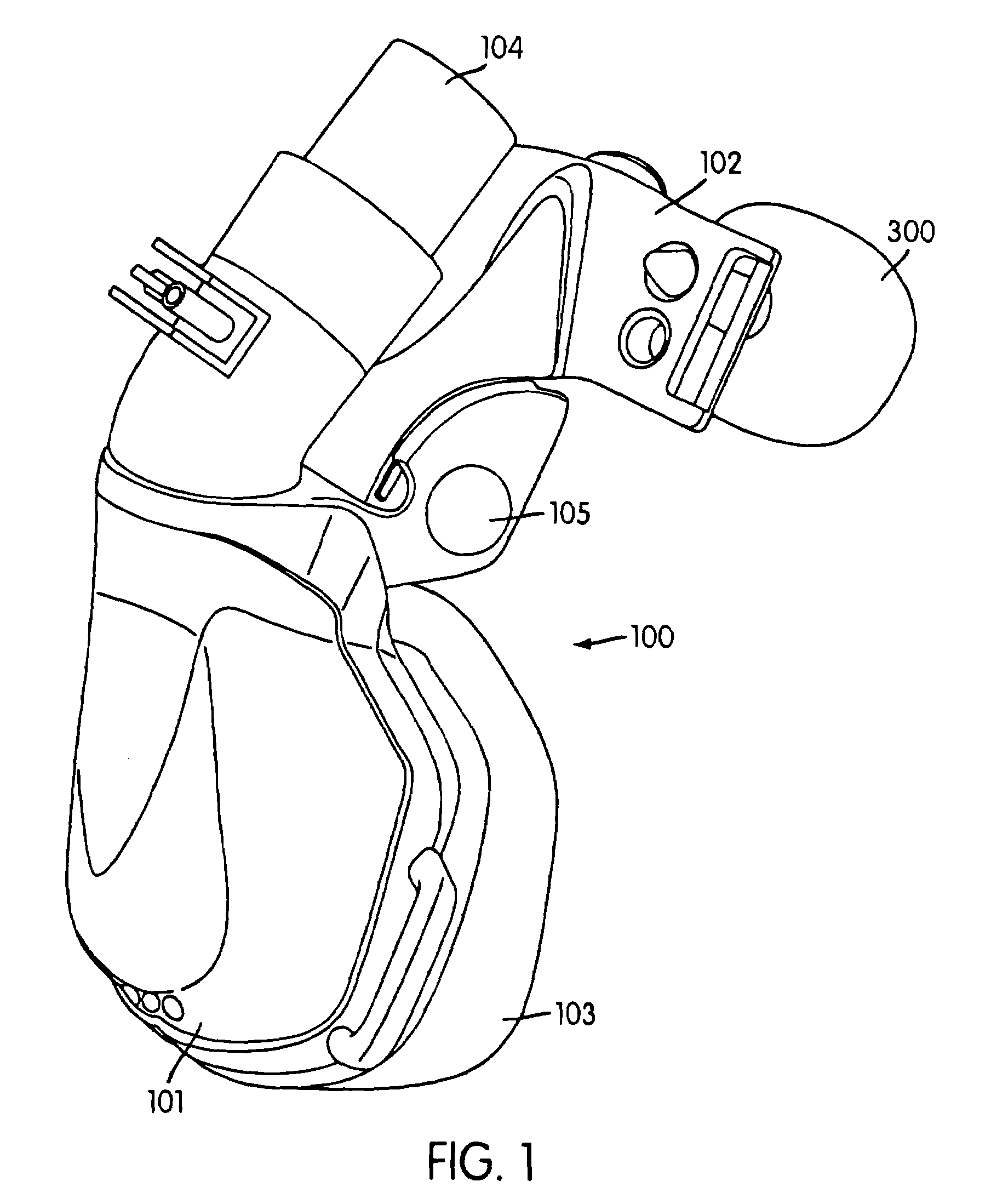Forehead pad for respiratory mask
a technology of nose pads and nose masks, applied in the field of nose pads, can solve the problems of pushing unduly hard on the nose of users, difficult assembly, further discomfort, etc., and achieve the effect of more comfort for users
- Summary
- Abstract
- Description
- Claims
- Application Information
AI Technical Summary
Benefits of technology
Problems solved by technology
Method used
Image
Examples
Embodiment Construction
[0098]FIG. 1 shows an example of a respiratory mask assembly 100. The mask assembly includes a frame portion 101, a forehead support 102, and a forehead pad 300. The mask is adapted to fasten securely and comfortably to a user's face. In particular, the mask assembly 100 comprises a seal-forming region 103 that covers the user's nose and / or mouth and a contains opening 104 to which an air delivery tube can be attached. Air or oxygen flows through the opening 104 under positive pressure.
[0099]The forehead support 102 is advantageously connected to the frame portion 101 of the mask assembly 100, e.g., by a pivot device 105, which can be adjusted to allow the forehead support 102 to the accommodate the configuration of a user's face. The forehead support 102 is preferably made from a thermoplastic material. One embodiment of a forehead support is shown in greater detail in FIG. 2.
[0100]The forehead support 102 can be configured to be essentially straight or it can be curved. The essent...
PUM
 Login to View More
Login to View More Abstract
Description
Claims
Application Information
 Login to View More
Login to View More - R&D
- Intellectual Property
- Life Sciences
- Materials
- Tech Scout
- Unparalleled Data Quality
- Higher Quality Content
- 60% Fewer Hallucinations
Browse by: Latest US Patents, China's latest patents, Technical Efficacy Thesaurus, Application Domain, Technology Topic, Popular Technical Reports.
© 2025 PatSnap. All rights reserved.Legal|Privacy policy|Modern Slavery Act Transparency Statement|Sitemap|About US| Contact US: help@patsnap.com



